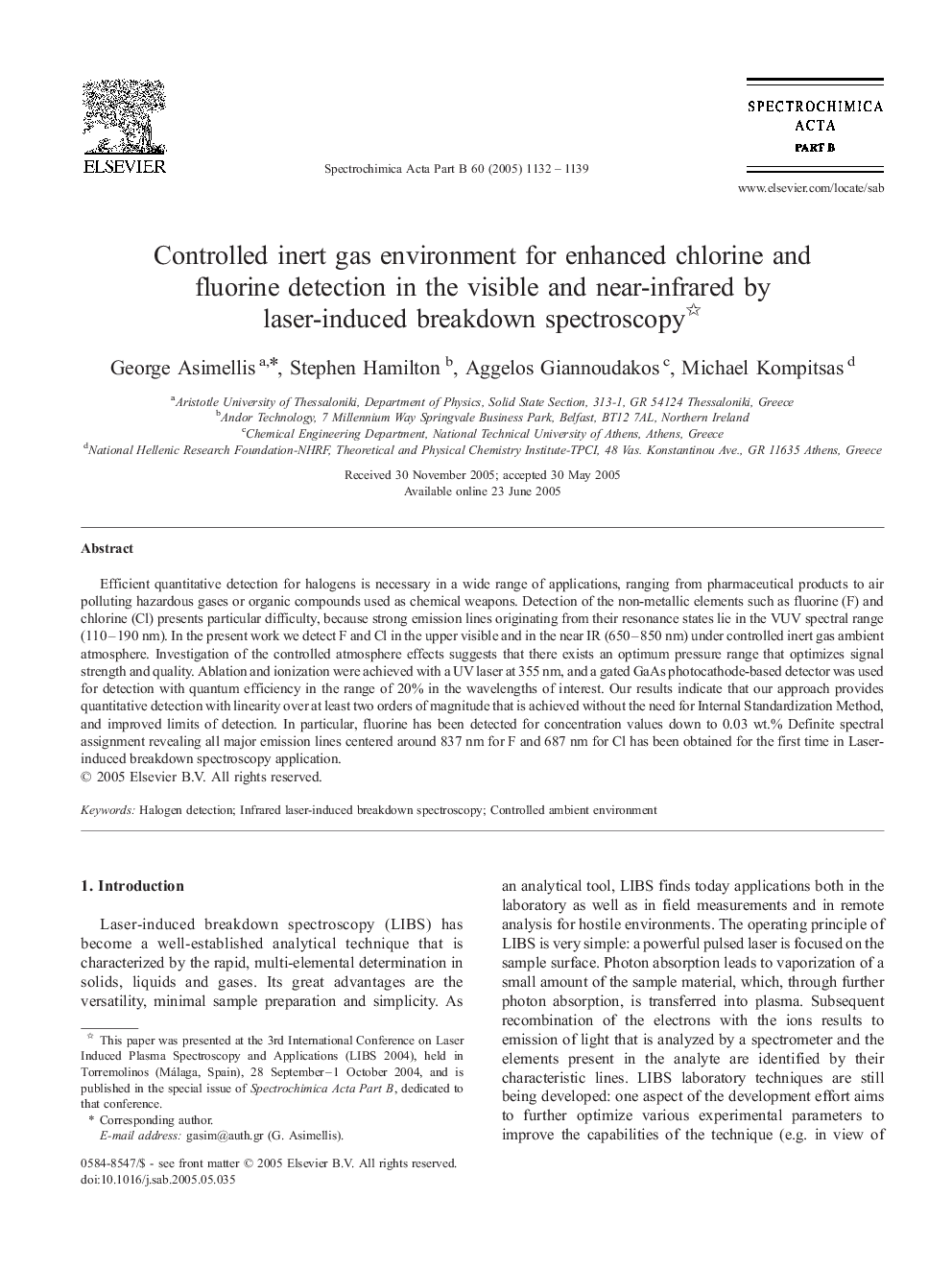| Article ID | Journal | Published Year | Pages | File Type |
|---|---|---|---|---|
| 9757254 | Spectrochimica Acta Part B: Atomic Spectroscopy | 2005 | 8 Pages |
Abstract
Efficient quantitative detection for halogens is necessary in a wide range of applications, ranging from pharmaceutical products to air polluting hazardous gases or organic compounds used as chemical weapons. Detection of the non-metallic elements such as fluorine (F) and chlorine (Cl) presents particular difficulty, because strong emission lines originating from their resonance states lie in the VUV spectral range (110-190 nm). In the present work we detect F and Cl in the upper visible and in the near IR (650-850 nm) under controlled inert gas ambient atmosphere. Investigation of the controlled atmosphere effects suggests that there exists an optimum pressure range that optimizes signal strength and quality. Ablation and ionization were achieved with a UV laser at 355 nm, and a gated GaAs photocathode-based detector was used for detection with quantum efficiency in the range of 20% in the wavelengths of interest. Our results indicate that our approach provides quantitative detection with linearity over at least two orders of magnitude that is achieved without the need for Internal Standardization Method, and improved limits of detection. In particular, fluorine has been detected for concentration values down to 0.03 wt.% Definite spectral assignment revealing all major emission lines centered around 837 nm for F and 687 nm for Cl has been obtained for the first time in Laser-induced breakdown spectroscopy application.
Related Topics
Physical Sciences and Engineering
Chemistry
Analytical Chemistry
Authors
George Asimellis, Stephen Hamilton, Aggelos Giannoudakos, Michael Kompitsas,
